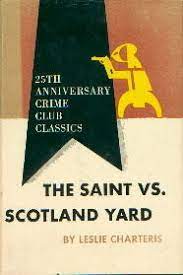photo: AbeBooks
About the author: Valentine Williams (1883–1946) was an English journalist and writer of popular fiction. Williams was awarded the Military Cross as a soldier and wrote two autobiographical books about his war-time experiences. In the aftermath of war, he travelled widely as a reporter. It was during this period that he began writing thrillers and around 1926 he gave up his post at the Daily Mail to pursue a full-time career as an author. (Wikipedia)
Major characters:
Desmond Okewood, British Intelligence
Francis Okewood, his brother
Dicky Allerton
Dr. Henry Semlin
Anna Schratt, innkeeper
Monica Rachwitz, Desmond's friend
Dr. Adolph Grundt, a.k.a. "der Stelze" and "Clubfoot"
Locale: Rotterdam, The Netherlands; and Berlin and Düsseldorf, Germany
Synopsis: Desmond Okewood, our narrator, is with British Intelligence (this is during WW I). He is anxious to learn the whereabouts of his brother, Francis Okewood, also with British Intelligence; but who has not been heard from for some time. He learns from an officer that Dicky is still alive, and as Francis is fluent in German, likely there as a spy. His friend Dicky Allerton provides a coded communication which may contain clues to his whereabouts, as well as half of some document, apparently valuable.
Desmond decides to enter Germany through Holland. He goes to Rotterdam and takes a room in a German inn run by Anna Schratt. The man in the adjacent room, Dr. Henry Semlin, suddenly has a heart attack and dies at Desmond's feet. Desmond decides to swap identities with him, to gain his travel papers. He also finds a silver badge, the insignia of the German Secret Police Section Seven, which will gain him wide access.
Desmond travels to Berlin, and meets up with the Emperor, who holds the other half of the secret document. Taking the document, he escapes from the Emperor before he can be found out; and runs into Dr. Adolph Grundt, a.k.a. Clubfoot, the German master spy. He hits Clubfoot on the head and teams up with his old friend Monica Rachwitz as they try to get out of Germany before Clubfoot catches up with them.
Review: This is the first of seven in the Clubfoot series, and is the only spy novels I have run across set in the World War I era. They are fast-paced and adventurous page-turners. The settings are well described, and put the reader in the dark, rainy streets of various German cities. It contains the usual requirements for spy novels: chases, disguises, false passports, fights, and of course a beautiful woman.
I found it interesting when Okewood describes the 'code of honor' among intelligence workers: they respect those on the other side - they may fight them, but they will not kill them.
There are two big "coincidences" which are a stretch, but do serve to advance the story. First, Dr. Semlin conveniently dies (of natural causes!) in front of Desmond, allowing him to obtain his travel documents; and second, Desmond's old friend Monica just happens to be staying in the Berlin hotel in which he is trying to escape from Clubfoot.
The subtitle on the dustjacket is a bit misleading - this is not the story of Clubfoot, the German master spy (who has just a few brief appearances), but the story of Desmond Okewood, the British master spy.
If you enjoy spy novels like those of Manning Coles, you will enjoy Valentine Williams - for something a little different, being in the WW I era (WW II had not happened yet, when they were written!)

















